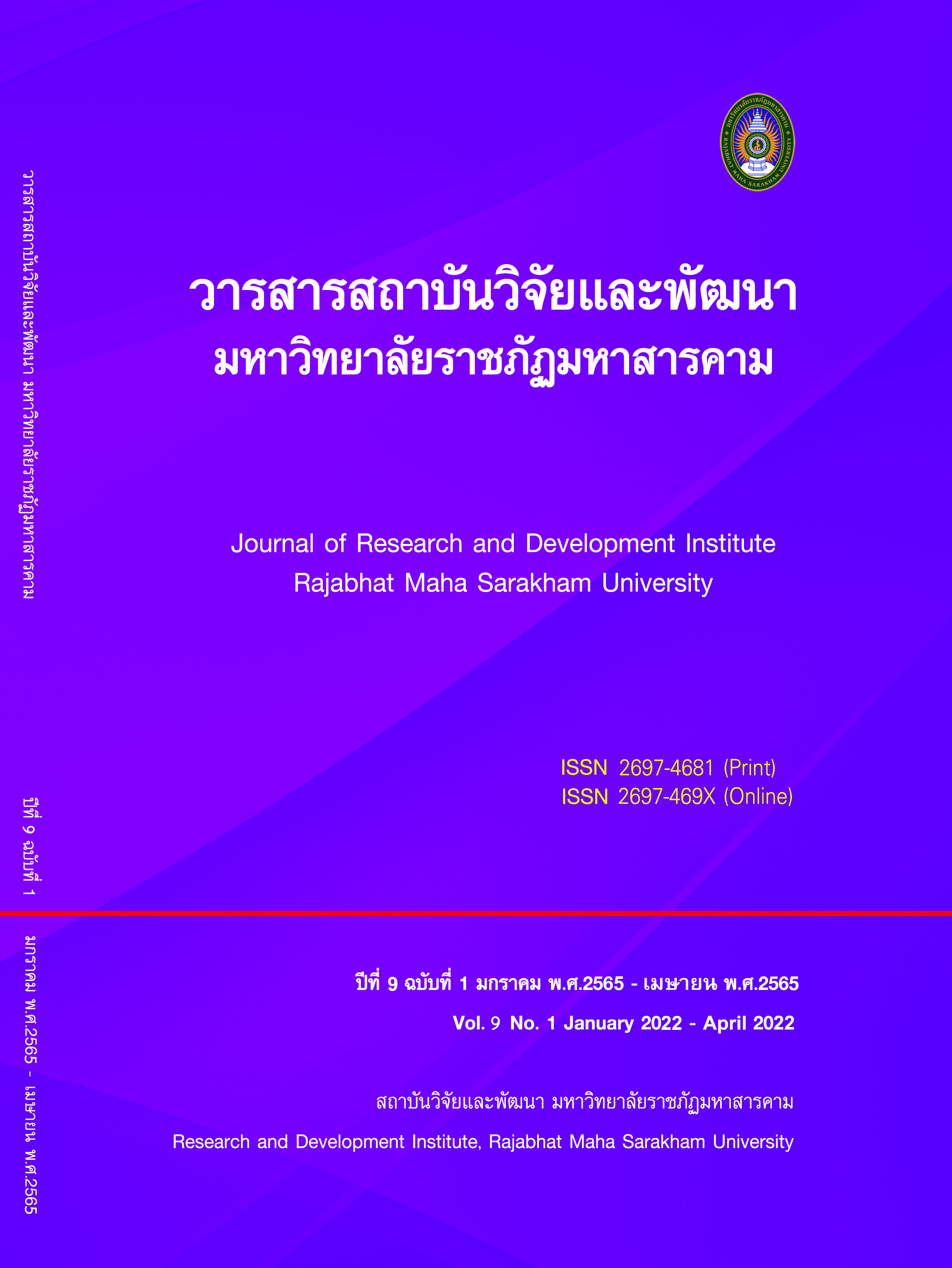The development of learning activities based on the stem education to promote the scientifically creative thinking of Prathomsuksa 6 students
Keywords:
STEM Education, Scientifically creative thinking, Learning achievementsAbstract
The purpose of this research study were to 1) develop learning activity management based on STEM education with 75/75 standardized criteria efficiency 2) to compare students’ scientifically creative thinking between pre-test and post-test activities with the STEM education 3) to compare students’ learning achievements between pre-test and post-test assessments with the STEM education. A sample was a group of 16 students in Prathomsuksa 6 at Ban khokkokmuang School by Cluster random sampling. Research instruments were determined with STEM education lesson plans, the learning achievement test, and the creative thinking measuring test. Standard deviation, percentage, dependent sample t - test were analyzed.
The results of the research findings have revealed as 1) the average efficiency index of the lesson plans of STEM education was 79.72/78.75, which was higher than the standardized criteria of 75/75. 2) Students’ responses of their scientifically creative thinking to their previous and lately learning with the STEM education were differentiated evidence at .05 level of the statistical significance. 3) Students’ learning achievements of their pre-test and post-test assessing differentiated evidence at .05 level of the statistical significance.
References
Ban Khok Muang School. (2018). Basic National Education Test Results (O-Net). Roi Et: Ban Khok Kok Muang School.
Hu, W., Wu, B., Jia, X., Yi, X., Duan, C., Meyer, W., and Kaufman, J.C. (2013). “Increasing Students’ Scientific Creativity: The “Learn to Think” Intervention Program”. Journal of Creative Behavior, 47(1): 3-21.
Krostsalee, P. (2018). Development of Creative Thinking for Grade 6 Students on the Topic of Daily Life Chemicals by Using Stem Education and Graphic Organizers. Sakon Nakhon: Sakon Nakhon Rajabhat University.
Meaens, H. (1958). Creative Power. New York: Dover.
Naramitpanich, P. (2017). Designing a STEM Learning Management Plan for Developing creative learning processes in science classes of grade 2 students. Mahasarakham: Mahasarakham University.
Office of Vocational Education Commission. (2013). Teaching course. Bangkok: Office of Vocational Education Commission.
Phoomkonsan, A. (2017). A Study of Learning Achievement and Scientific Creativity of Grade 5 Students Using STEM Concepts. Maha Sarakham: Maha Sarakham Rajabhat University.
Sakulsri, S. (2017). Learning activities based on the concept of STEM education To promote creativity and academic achievement of grade 6 students.Maha Sarakham: Maha Sarakham Rajabhat University.
Siripattrachai, P. (2013). STEM Education and Skills Development in the 21st Century. Journal of Executives, 33(2), 49-56.
Soonthornroj, W. (2008). Teaching development, Mahasarakham, Department of Teaching Curriculum. MahaSarakham: MahaSarakham University.
The Institute for the Promotion of Teaching Science and Technology. (2014). STEM Education. Bangkok: The Institute for the Promotion of Teaching Science and Technology.
Torrance, E.P. (1965). Rewarding Creative Behavior. Englewood Cliffs, N.J.: Prentice Hall.
Torrance, E.P. (1964). Guiding Creative Talent. Englewood Cliffs, N.J.: Prentice – Hall.Inc.
Weschaowakarn, S. (2018). A Study On Science Scholastic Achievement In Electrical And Astronomy Of Pratom Suksa 6 Students Through The Stem Education Learning Management. Bangkok: North Bangkok University.
Published
How to Cite
Issue
Section
License
Copyright (c) 2022 Journal of Research and Development Institute Rajabhat Maha Sarakham University

This work is licensed under a Creative Commons Attribution-NonCommercial-NoDerivatives 4.0 International License.
Articles that are published are copyrighted by the authors of the articles







